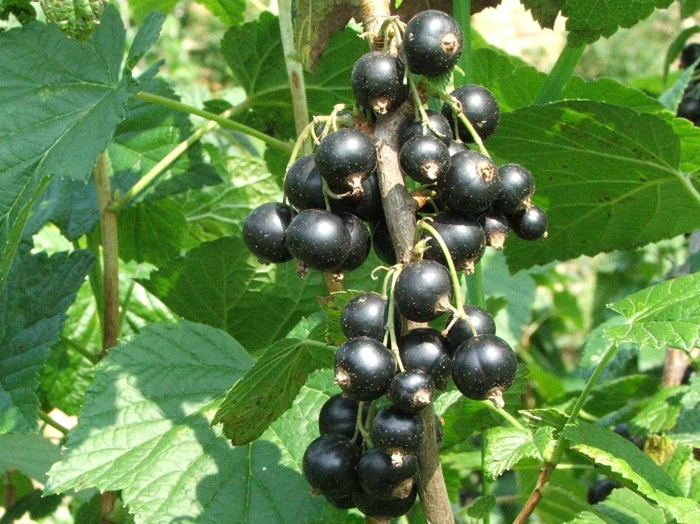European Black Currant
(Ribes nigrum)
European Black Currant (Ribes nigrum)
/
/

Jerzy Opioła
CC BY-SA 3.0























































Estimated Native Range
Climate Requirements for Enid, Oklahoma
| This Plant | Your Site | Plant Suitability for Your Location | ||
|---|---|---|---|---|
| • Precipitation | 6" - 145" | 34" | Your precipitation may be too high for this plant. | Too high |
| • High Temp. | 45°F - 96°F | 94°F | Your summer temperatures are normal for this plant. | Excellent |
| • Low Temp. | -49°F - 68°F | 24°F | Your winter temperatures are normal for this plant | Excellent |
Summary
European Black Currant is valued for its fruit, which is rich in Vitamin C and other antioxidants, making it popular for culinary uses such as jams, jellies, and syrups. The shrub is also used in breeding programs to improve disease resistance in other Ribes species. In the garden, it is often planted in fruit or vegetable gardens, and can also be used as a hedging plant. European Black Currant requires consistently moist soil conditions, and while it can tolerate a range of soil types, it prefers those that are well-drained and rich in organic matter. It is best planted in a location with full sun to part shade, and sheltered from strong winds to protect the flowers and pollinators. Pruning is important to maintain vigor and fruit production, with older stems being removed to encourage new growth. Potential problems include pests such as aphids and diseases like powdery mildew and blackcurrant gall mite. It is also susceptible to White Pine Blister Rust, which has led to restrictions on cultivation in some regions to protect pine forests.CC BY-SA 4.0
Plant Description
- Plant Type: Shrub
- Height: 3-4 feet
- Width: 3-4 feet
- Growth Rate: Moderate
- Flower Color: N/A
- Flowering Season: Spring
- Leaf Retention: Deciduous
Growth Requirements
- Sun: Full Sun, Part Shade
- Water: Medium
- Drainage: Slow, Medium, Fast
Common Uses
Bank Stabilization, Bee Garden, Bird Garden, Border Plant, Butterfly Garden, Deer Resistant, Edible*Disclaimer: Easyscape's listed plant edibility is for informational use. Always verify the safety and proper identification of any plant before consumption., Fragrant, Hummingbird Garden, Rabbit Resistant, Street Planting
Natural Habitat
Temperate parts of central and northern Europe and northern Asia, thriving in damp, fertile woodlands
Other Names
Common Names: Cassis, Black Currant, Cultivated Black Currant, Garden Black Currant, Solbær, Schwarze Johannisbeere, Mustaherukka, Cassis, Cassissier, Groseillier Noir
Scientific Names: Ribes nigrum, Ribes nigrum var. europaeum, Ribes pauciflorum, Ribes nigrum var. pauciflorum, Ribes cyathiforme, Ribes nigrum var. eglandulosum, Botrycarpum nigrum, Botrycarpum obtusilobum, Botryocarpium nigrum
GBIF Accepted Name: Ribes nigrum L.